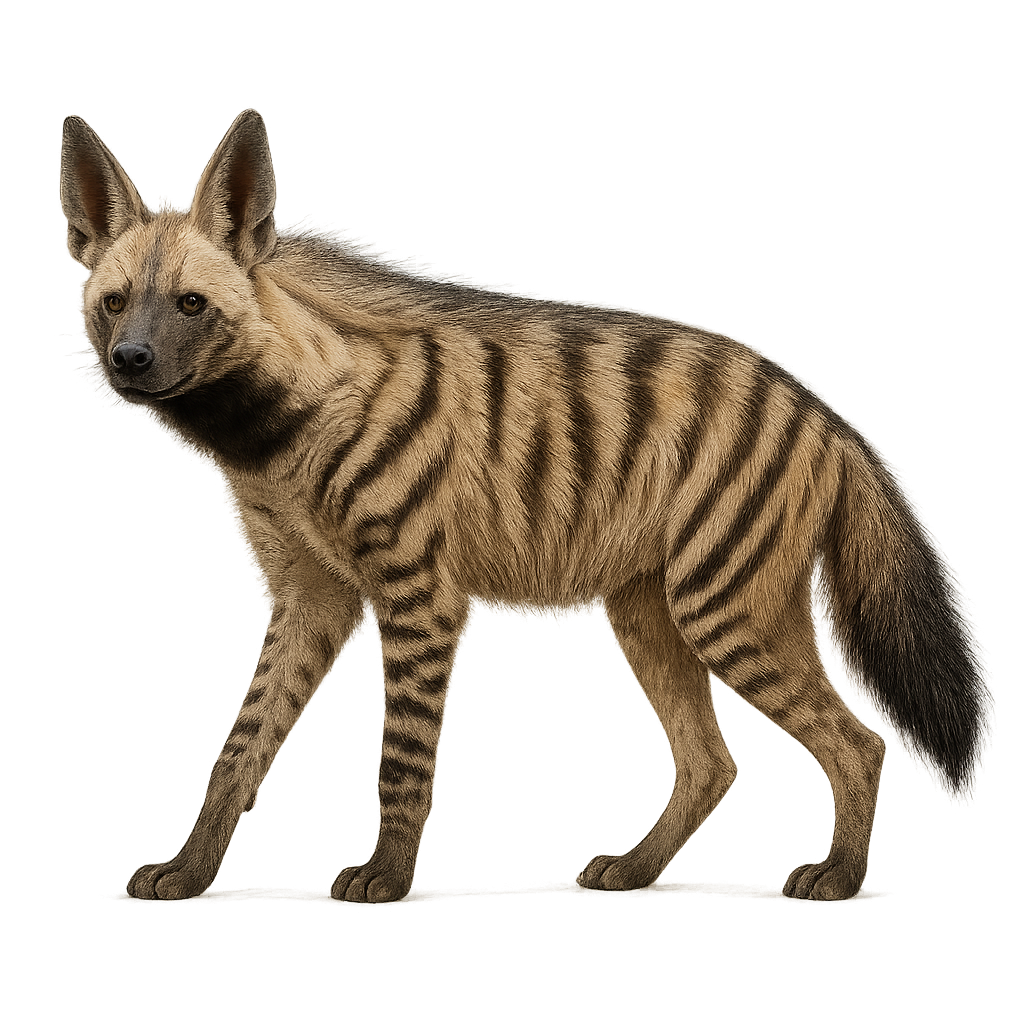Your wildlife photography guide.
Explore the striped hyena in detail, study its behavior, prepare your shots.
Where to observe and photograph the striped hyena in the wild
Learn where and when to spot the striped hyena in the wild, how to identify the species based on distinctive features, and what natural environments it inhabits. The WildlifePhotographer app offers tailored photography tips that reflect the striped hyena’s behavior, helping you capture better wildlife images. Explore the full species profile for key information including description, habitat, active periods, and approach techniques.
Striped Hyena
Scientific name: Hyaena hyaena

IUCN Status: Least Concern
Family: HYAENIDAE
Group: Mammals
Sensitivity to human approach: Suspicious
Minimum approach distance: 50 m
Rut period: January to June
Gestation: 90-92 jours
Births: April to August
Habitat:
Semi-desert areas and rocky hills
Activity period :
Mainly active at night, generally discreet during the day.
Identification and description:
The Striped Hyena is a medium-sized carnivore, easily recognizable by its striped coat and unique behavior among hyenas. It measures about 90 cm in length, with a shoulder height of 60 cm, and weighs between 40 and 60 kg. Its coat is mainly gray or beige, with black stripes on the flanks, helping it blend into its environment. The Striped Hyena has a wide head, large ears, and an elongated muzzle, along with a short tail. Unlike the spotted hyena, the Striped Hyena is more solitary and prefers to hunt alone or in small groups. It primarily feeds on small mammals, reptiles, and insects, but is also opportunistic and a scavenger, feeding on the carcasses of dead animals. It is found mainly in North Africa, in arid and semi-arid areas such as deserts and savannas. While the Striped Hyena is not endangered, it is threatened by habitat loss and human conflict.
Recommended lens:
300 mm – adjust based on distance, desired framing (portrait or habitat), and approach conditions.
Photography tips:
Approach slowly and discreetly, using a telephoto lens, as the striped hyena is more secretive and may quickly move away if it feels threatened.
Photograph early in the morning or late in the afternoon, when soft light enhances the hyena's activity, often while hunting or feeding in savannas or wooded areas.
Capture moments of natural behavior: The striped hyena is a predator and scavenger, spending much of its time searching for food. Wait for moments when it is on the move or engaged in action.
Be patient and respectful: Striped hyenas are often more active at night, so you may need to be patient to capture them in their natural behavior.
Respect its natural environment and do not disturb its natural behaviors, especially when hunting or resting. Follow local conservation rules to preserve this species.
The WildlifePhotographer App is coming soon!
Be the first to explore the best nature spots, track rutting seasons, log your observations, and observe more wildlife.
Already 1 431 wildlife lovers subscribed worldwide

